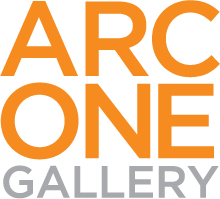Deep Breathing: Resuscitation for the Reef, 2015, Artists 4 Paris Climate, Muséum National d'historie Naturelle, Paris
Janet Laurence is renowned as one of Australia’s leading contemporary artists. Her groundbreaking practice explores issues of the natural world and addresses our relationship to nature. Across photography, sculpture, video and installation, Janet Laurence creates visually immersive environments to reflect on the mutability of nature, science, memory and loss. Through her extraordinary work, Janet Laurence offers us a deeply experiential and cultural relationship to the environment.
Her work has been shown at some of the world’s leading contemporary art galleries, museums and cultural institutions for over 20 years. Recently, Janet Laurence has been involved in various contemporary art projects both in Australia and internationally that meditate on the relationship between humanity and the natural world.
In 2015 Janet Laurence was appointed to create an important artwork for the Climate Change Conference in Paris, as part of Artists 4 Paris Climate, where she presented her work Deep Breathing: Resuscitation for the Reef at the Muséum National D’Historie Naturelle. In order to create this contemporary art installation – a modern-day wunderkammer – Laurence spent several months observing and documenting the impact of climate change on the Great Barrier Reef, and as a result she created a ‘reef hospital’, where she displayed threatened corals and other marine species of this Australian ecosystem. The specimens used for this installation where carefully selected from the collections of the Muséum National D’Historie Naturelle and the Australian Museum. Due to its rigorous research and pertinence with the conference, the general public, artists and scientists applauded Laurence’s work.
H20: Water Bar, 2016, (installation view), Paddington Reservoir Gardens, Sydney
Another recent work, presented in early 2016, was H2O: Water Bar at the Paddington Reservoir Gardens, Sydney. In the middle of this park, Janet Laurence created an apothecary-type bar as an immersive installation that served water from different regions of Australia, in order to stress on the importance of this natural resource and its conservation. The H2O: Water Bar installation also included screenings, performances and debates around the protection of water sources. The installation attracted a lot of press, generating debate on water issues, as Janet Laurence intended.
In her 2015 publication, Janet Laurence: The Pharmacy of Plants, author Prudence Gibson analyses Laurence’s bio-art practice by dissecting some of her major works and through conversations with the artist. Gibson describes the environmental motivations of Janet Laurence to make her artworks, as well as her scientific processes in collaboration with biologists, curators and other artists, that might lead to future creative solutions to improve our relationship with ecology.
Looking ahead, Janet Laurence is creating a new artwork for IGA Berlin 2017 called Inside the Flower, a sculptural and architectural space made of recycled and sustainable materials, based on the geometric structure of a medicinal plant. The space will serve as both a botanical display and a performative space, referencing Germany’s botanical history. Inside the flower will also involve visitors and the local community encouraging them to eat and drink some of the edible flowers and plant extracts that will be found within this architectural contemporary artwork.
Janet Laurence has been working on bio-art and eco-art for more than 25 years. She has a profound concern for the fragility of our environment and humanity’s troubled relationship with our planet. Her artworks are not only a reflection of those concerns, but significantly, they also offer a way to heal and reconcile our connection with nature through artistic and scientific media.


